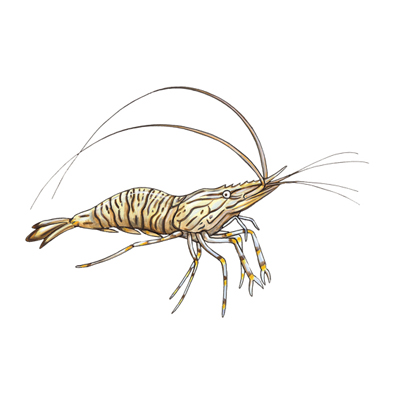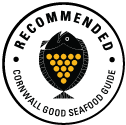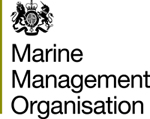

Cornish prawns are small but tasty and are caught using environmentally friendly prawn pots in estuaries and shallow bays.
Prawns are caught in Cornish estuaries and bays using lightweight plastic prawn pots. These are selective in that undersized prawns can be returned alive back to the sea and there are no problems with accidental by catch. This is a small scale local fishery and at present the majority of the catch is exported live to Spain where they are highly valued. The majority of Prawns that we eat in the UK are farmed prawns from South East Asia. Not only is the taste inferior but farming prawns is very bad for the environment.
Only 262kg of prawns were landed to Cornish ports in 2021 according to MMO records, with a value of £5.8k.

Cornish Waters
Prawns are caught using lightweight plastic prawn pots, which are selective and have no impact on the seabed.
Learn moreCornwall Good Seafood Guide rates fish on sustainability using a scale of 1 to 5.
1, 2 and 3 are recommended, Fish to avoid are rated 5.
We use the system devised by the Marine Conservation Society (MCS) so our scores are comparable with the scores produced by MCS for the UK and fisheries from all around the world. For more information on scoring click here.
Prawns are fast growing crustaceans that are common in rocky areas in sheltered bays and estuaries. They are scavengers that feed on algae and animal matter and they are important in the food chain as a food source for many other larger species. During the summer months prawns move into shallower coastal waters to feed and take advantage of higher temperatures. Prawns live for up to 5 years and spawn between one and 3 times per each year during the summer months (Haig et al 2014). Newly recruited prawns arrive from the plankton in July and August and feed in warm shallow waters, by the autumn they are mature and they move out to deeper water to avoid changing temperatures and salinity that are experienced close to shore. Biological vulnerability to fishing is very low 10% (source sealifebase.org). They overwinter in deep water channels in Cornish estuaries where they are fished by prawn potters.
Very little is known about the stocks of prawns in our estuaries but they are abundant, fast growing and produce large numbers of planktonic offspring each year. More studies are needed but landings are steady and there is currently no evidence of decreased stocks.
Commercial shellfishing can only be carried out by fishermen who hold a shellfish permit from Cornwall Inshore Fisheries and Conservation Authority. There are no limits though on amount of pots used and there is no quota set on prawn catches in Cornwall. There is no minimum size but there is only a commercial market for prawns that are a marketable size, this varies but is approx. 4cm carapace length and 8cm total length.
Prawns are caught commercially in Cornwall by a very small fleet of inshore vessels that use specially designed prawn pots. These small plastic creels are baited and left in the water for a maximum of 2 days before being hauled. Any prawns that are too small for commercial use escape through the mesh and they are also graded aboard the boat by the fishermen and smalls are returned live and unharmed to the sea. There are few issues with by catch as any unwanted small fish that are found in the pots are put back into the sea immediately by the fishermen. By-catch species include sea scorpions, rockling, gobies and pipefish (Siganus arcus). Prawn fishing is only viable when the prawns start to congregate in the deep water channel of the fal estuary so it is limited to the winter months with the peak being between September and January. The peak breeding time for prawns is avoided naturally.






Cornwall Good Seafood Guide is underpinned by the Marine Conservation Society (MCS) Good Fish Guide. The first UK consumer guide to sustainable seafood. For more information visit www.fishonline.org
Cornwall Good Seafood Guide is here to help us all make sustainable seafood choices. Choices that will help us keep the oceans healthy and Cornish fishers' futures safe. This website is funded by Cornwall Wildlife Trust. If you would like to make a meaningful difference to the health of our oceans, please consider making a donation to the Cornwall Wildlife Trust Ocean Emergency fund. Your donation will help safeguard these remarkable environments, ensuring that they continue to thrive for generations to come. Together, we can be stewards of the seas and champions for a healthier, more sustainable future.